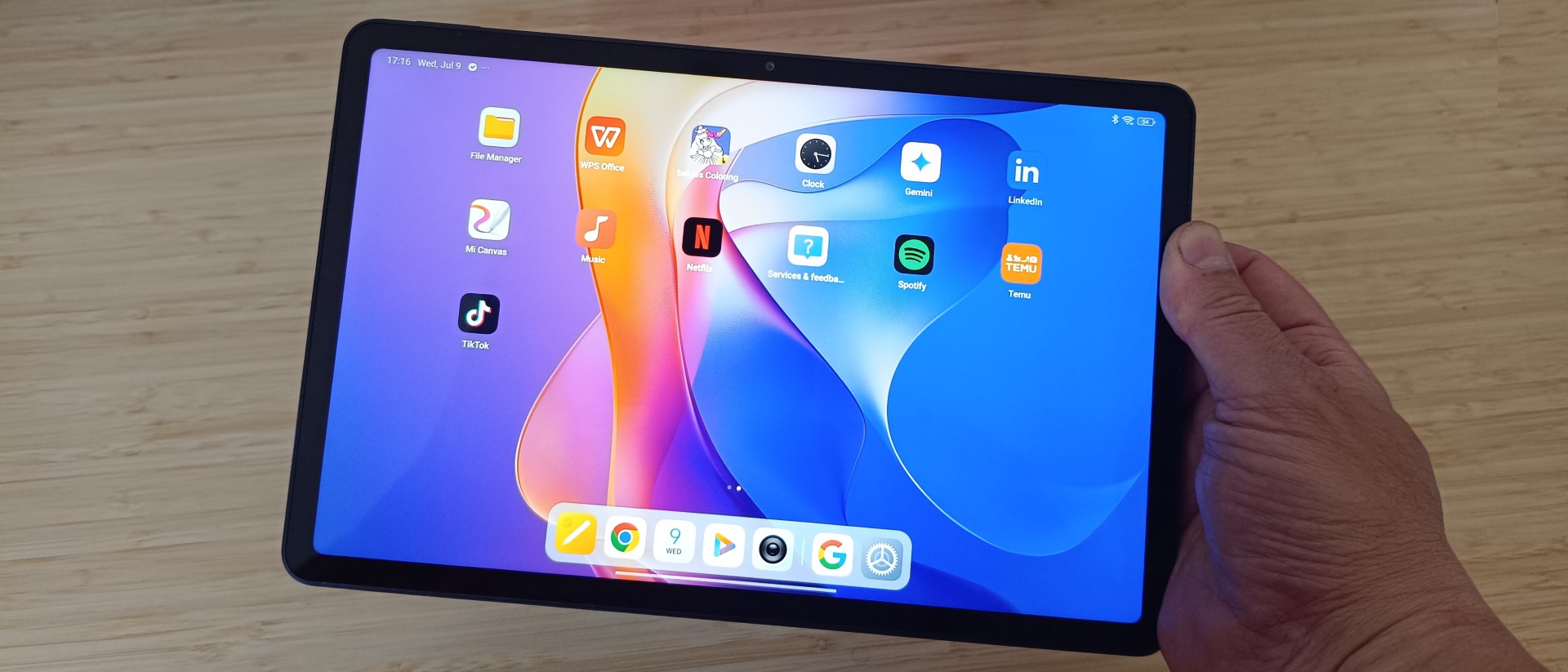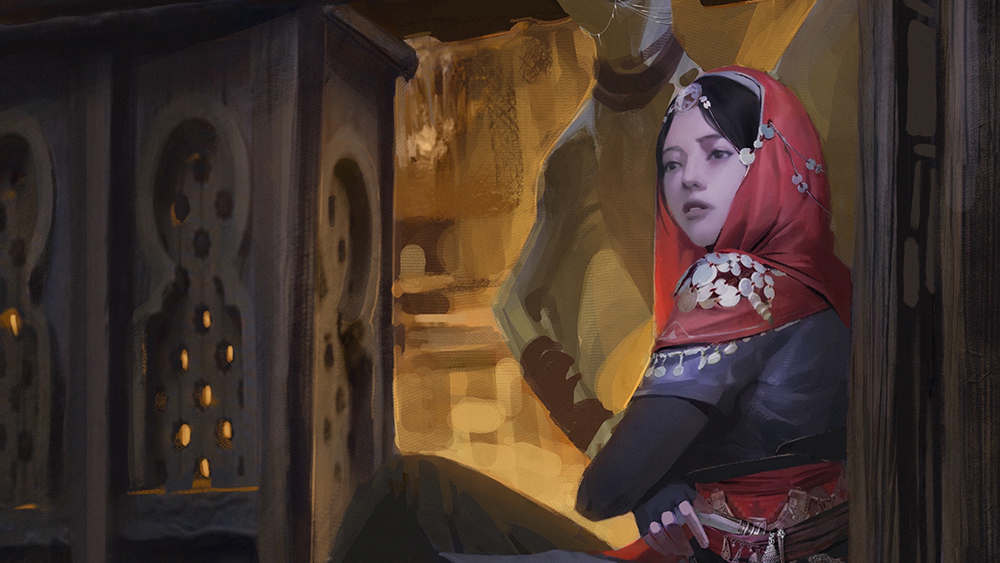Our Verdict
The Redmi Pad 2 is a cracking budget tablet that delivers exactly what most people need – solid performance, excellent battery life, and a surprisingly premium feel. It won't replace your laptop anytime soon, and if you buy a more expensive tablet, you'll get a better screen, faster processor and better sound. But if you just want something that does the job, at a low price, it's hard to argue with the value here.
For
- Premium aluminium design
- Four speakers with Dolby Atmos
- 9000mAh battery life
- 2.5K display
- Headphone jack
- Expandable storage up to 2TB
Against
- Processor not the most powerful
- Only 4GB RAM in basic model
- 18W charging not the fastest
- Not an OLED screen
- Weird button placement
- Front camera only 5MP
Why you can trust Creative Bloq
I wasn't expecting much when the Redmi Pad 2 landed on my desk. Cheap tablets don't have a good reputation, and for good reason. So when I lifted this thing out of its box, I was genuinely surprised.
After a fortnight of daily use, including streaming music and films, surfing the web and some mobile gaming, I can confidently say Xiaomi has created something special. Before we start, though, I should note two things before we proclaim this better than any of the other tablets with a stylus you can find...
Firstly, it's not available in the USA. (Its maker Xiaomi does not currently sell tablets of any description in the States.) And secondly, while the base model is just £169 in the UK, that only gets you 4GB RAM and 128GB of storage. The model I'm reviewing, which has 8GB RAM and 256GB storage, costs £219.
That's still very affordable, though. So let's find out what it's capable of...
Redmi Pad 2 review: Key specifications
CPU | MediaTek Helio G100-Ultra (6nm) |
RAM | 4GB or 8GB |
Storage | 128GB or 256GB U, extendable via microSD up to 2TB |
Screen size | 11 inches |
Screen type | IPS LCD |
Resolution | 2560 x 1600 |
Max refresh rate | 90Hz |
Rear camera | 8MP |
Front camera | 5MP |
OS | HyperOS 2.0 (Android 15) |
Dimensions | 254.6 x 166.0 x 7.4mm |
Weight | 510g |
Spec score: 3/5
Redmi Pad 2 review: Design and screen
- Slim profile with rounded edges
- Aluminium build feels premium
The first thing that struck me about the Redmi Pad 2 was how solid it feels. That aluminium unibody construction isn't just for show; it genuinely makes this tablet feel like premium kit.
Admittedly at 510g (the weight of a bag of sugar), it's not the lightest around, but it's perfectly manageable for extended use. The flat-sided design with rounded corners strikes the right balance between modern aesthetics and comfortable handling. Indeed it's very similar to Honor Pad 10, though the Redmi is slightly more compact thanks to its 11-inch screen versus Honor's 12.1-inch display.
Daily design news, reviews, how-tos and more, as picked by the editors.
The button placement is a bit odd: power and volume are on opposite sides, which means the volume rocker works backwards when you're holding it in landscape mode. It's not a deal-breaker, but it's mildly irritating.
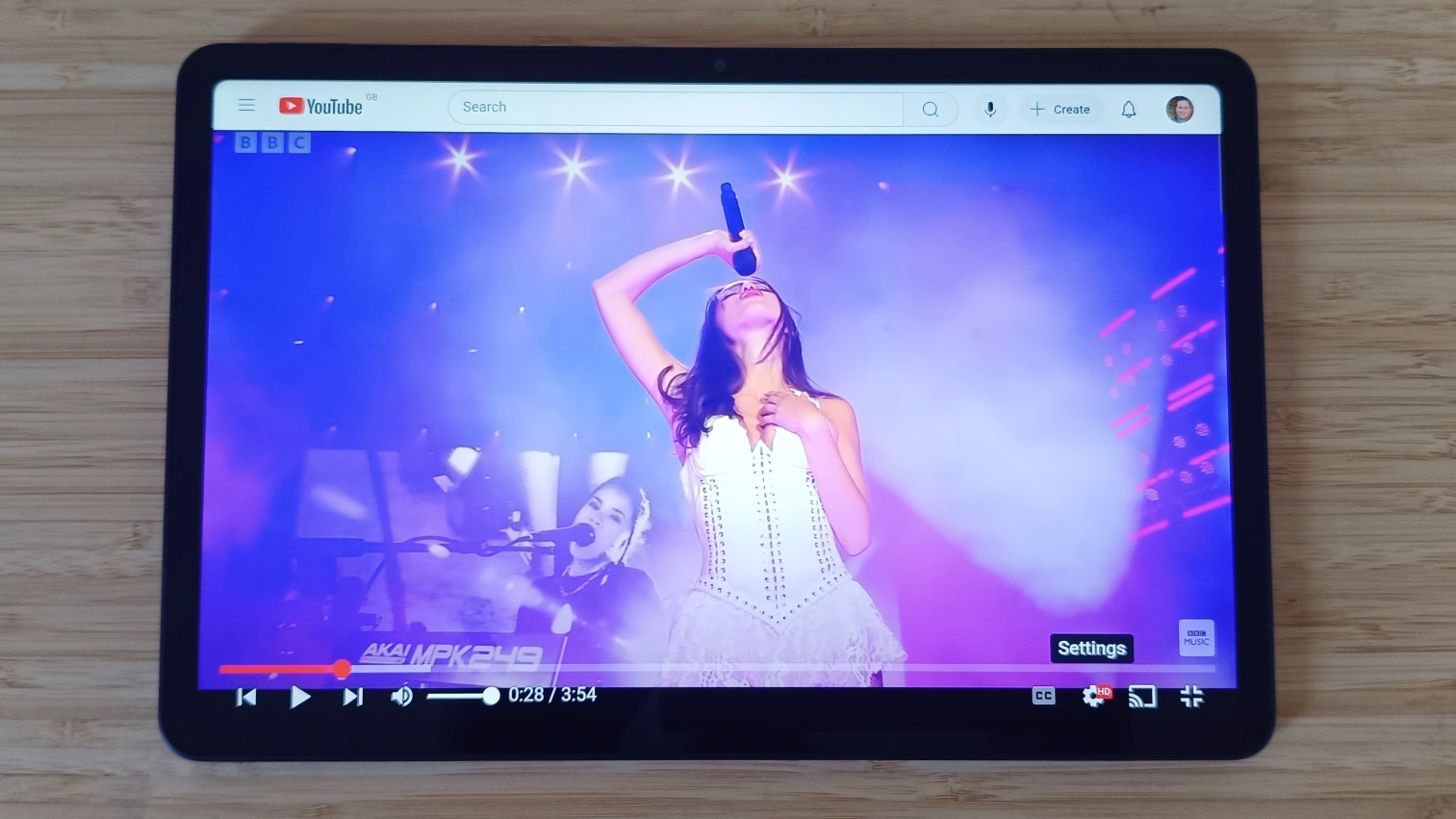
But what more than makes up for that, in my mind, is the return of the headphone jack. Yes, it's positioned a bit close to the edge, but having that 3.5mm port back is genuinely useful – something the Honor Pad 10 sadly lacks. There's expandable storage up to 2TB via microSD, another feature Honor disappointingly omitted from its otherwise excellent tablet.
In use, I found the 11-inch display sharp and vibrant enough for most things. That 2.5K resolution (2560 x 1600) delivers crisp text and detailed images, whilst the 90Hz refresh rate keeps scrolling smooth. Compared to the Honor Pad 10's 120Hz panel, the difference is noticeable but not deal-breaking. And at 600 nits peak brightness, it's perfectly usable outdoors.
Overall, the colours are decent for an LCD panel (it supports 1.07 billion colours), but don't expect the punchy vibrancy of OLED displays. I also experience some backlight bleeding in darker scenes, but nothing that ruins the experience.
Design score: 3.5/5
Redmi Pad 2 review: Features
- Quad speakers with Dolby Atmos
- Optional Smart Pen and case
Four speakers with Dolby Atmos support in a £169 tablet? It shouldn't work, but it absolutely does. The audio is spacious and dynamic; I've heard worse from tablets costing at least twice as much. While the Honor Pad 10's six-speaker setup has more drivers, the Redmi's implementation is surprisingly close in quality, with better bass response than I expected.
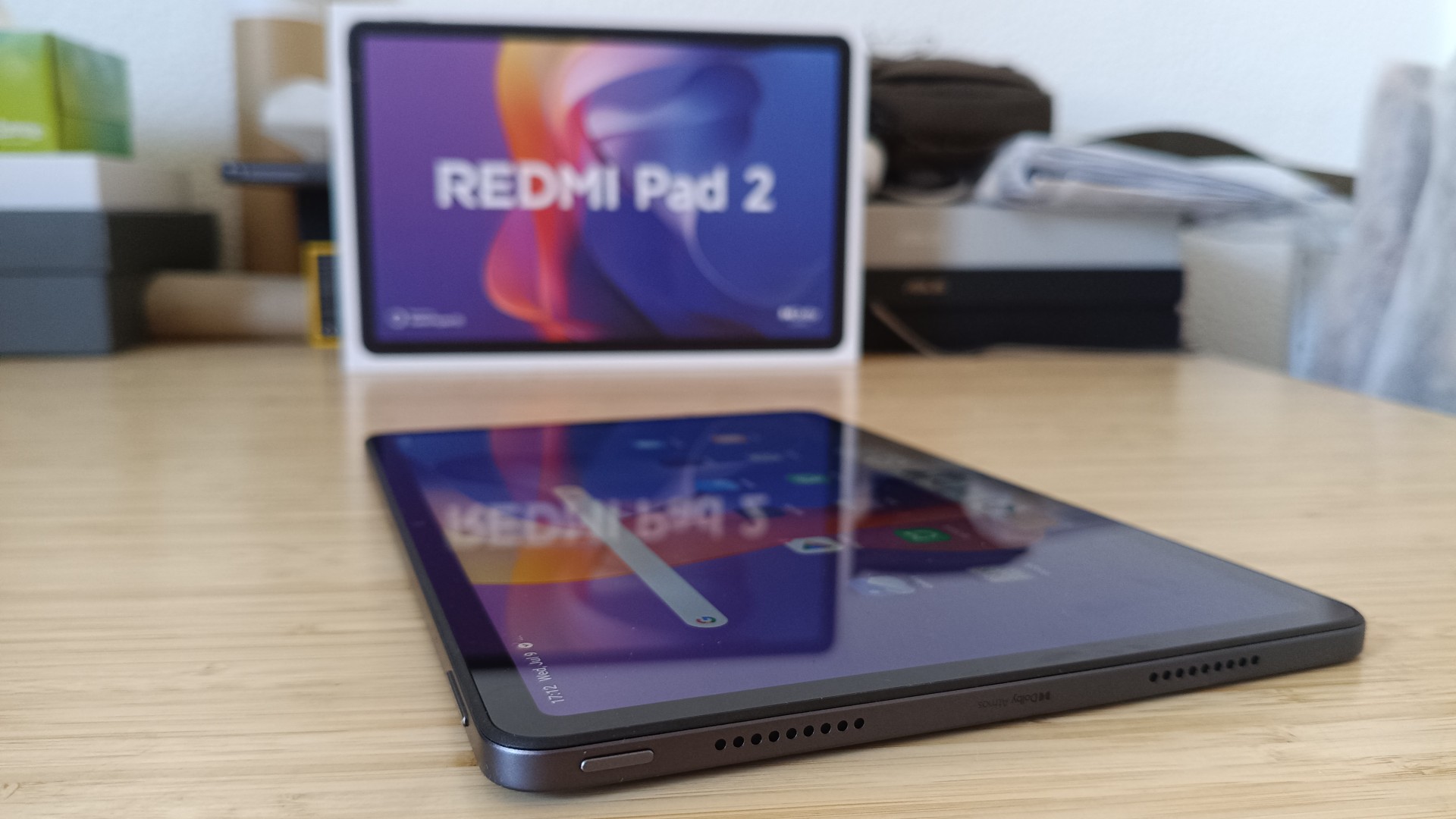
Xiaomi has also created a decent accessories ecosystem. The Smart Pen (£59, but often bundled for £19) is pressure-sensitive and genuinely useful for note-taking and sketching. It charges via USB-C rather than magnetically attaching, which isn't elegant, but it works.
The tablet runs HyperOS 2.0 based on Android 15, which is cleaner and more intuitive than Xiaomi's previous attempts. As you expect from Chinese tech, there's some bloatware (TikTok, Temu, WPS Office), but nothing too intrusive.
Features score: 3/5
Redmi Pad 2 review: Performance
- Chip handles everyday tasks competently
- You need the 8GB version for multitasking
The MediaTek Helio G100-Ultra chipset is adequate for most tasks: web browsing, video streaming, light gaming, and document editing all work fine. It's not going to set any benchmark records, but it's perfectly capable for typical tablet use.
That said, the RAM configuration you choose makes a real difference. The base 4GB model is going to restrict you quite a bit multitasking, whilst the 8GB version (the one I've been testing) provides much more breathing room. If you're planning to use this for anything beyond basic tasks, spend the extra £50 on the higher-spec model.
With the 8GB model, I found gaming performance is reasonable on casual titles. Simple games like Monument Valley and Alto's Adventure ran smoothly, while more demanding titles like Zenless Zone Zero were playable on low settings. Just don't expect console-quality performance.
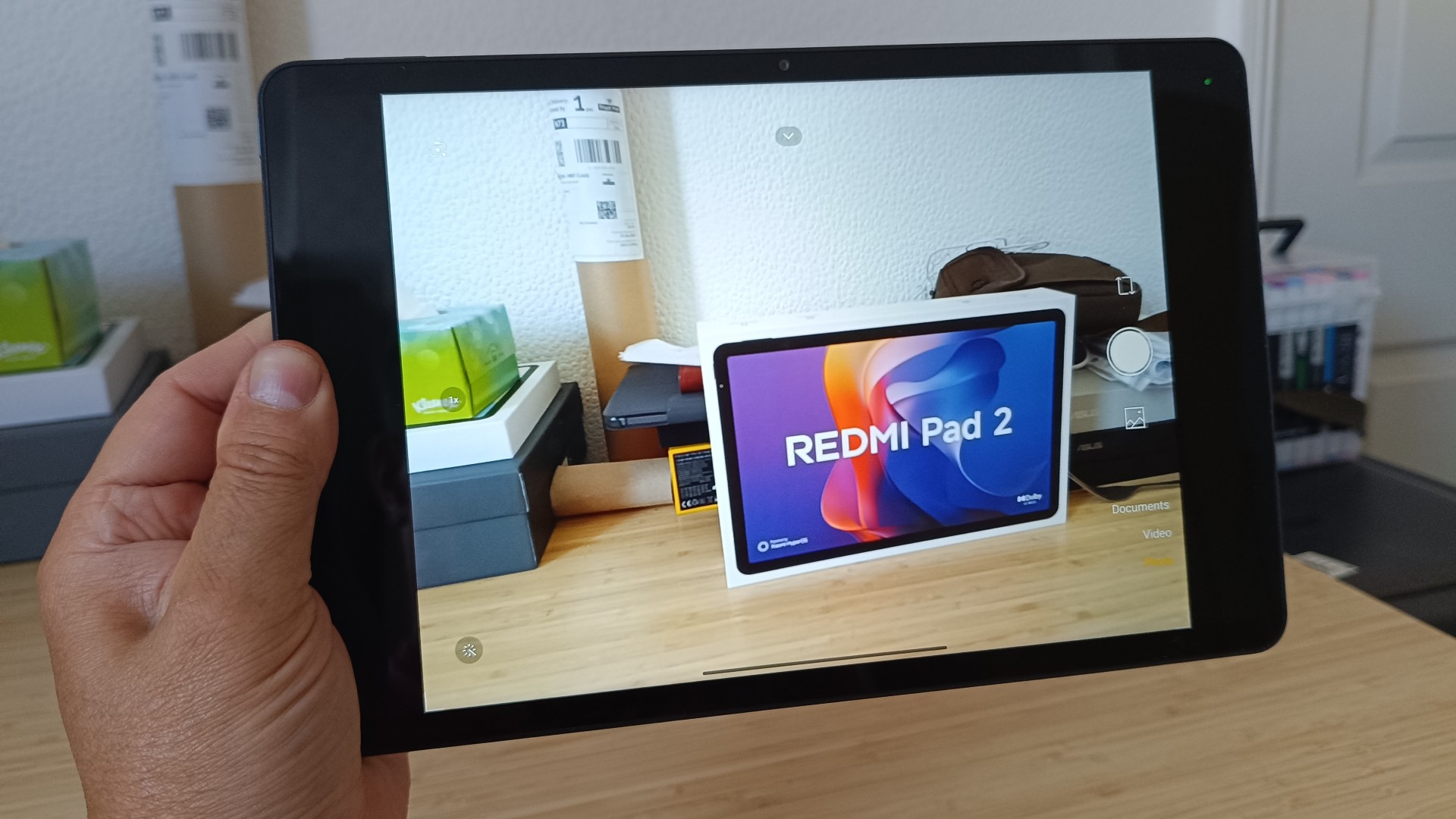
The 9000mAh battery is genuinely impressive, easily lasting about 10 hours of mixed use. My video streaming saw roughly 10% battery drain per hour, which you can't really complain about. However, it didn't come anywhere near the Honor Pad 10's extraordinary 19-hour endurance – virtually making the case for the latter's higher price alone.
The 18W charging is also sluggish by modern standards: it takes well over two hours for a full charge. The Honor Pad 10's 35W charging was notably faster, getting to 100% in around 90 minutes. Overall, though, Redmi's battery lasts so long that it's rarely an issue: I was generally using it throughout the day and only charging it overnight.
Performance score: 3/5
Redmi Pad 2 review: Who's It For?
- Anyone light on funds who wants a good tablet experience.
The Redmi Pad 2 is perfect for students who need a reliable device for note-taking, research, and entertainment. It's also good for anyone wanting a cheap way to enjoy media consumption, video calls, and/or light productivity work. Note that I wouldn't recommend the basic version with 4GB RAM, though, and you will have to step up to £219 to get the 8GB version.
Attributes | Notes | Rating |
|---|---|---|
Specs | Great for such a low price | 3/5 |
Design & Screen | Sharp display, good speakers | 3.5/5 |
Features | Good audio, clean software | 3/5 |
Performance | Adequate for daily use | 3/5 |
Buy it if…
- You're short on cash
- Battery life is important
- You mainly want to stream entertainment
Don't buy it if…
- You enjoy top-tier gaming
- You want to run creative software
- Fast charging is a priority
out of 10
The Redmi Pad 2 is a cracking budget tablet that delivers exactly what most people need – solid performance, excellent battery life, and a surprisingly premium feel. It won't replace your laptop anytime soon, and if you buy a more expensive tablet, you'll get a better screen, faster processor and better sound. But if you just want something that does the job, at a low price, it's hard to argue with the value here.

Tom May is an award-winning journalist specialising in art, design, photography and technology. His latest book, The 50 Greatest Designers (Arcturus Publishing), was published this June. He's also author of Great TED Talks: Creativity (Pavilion Books). Tom was previously editor of Professional Photography magazine, associate editor at Creative Bloq, and deputy editor at net magazine.
You must confirm your public display name before commenting
Please logout and then login again, you will then be prompted to enter your display name.
